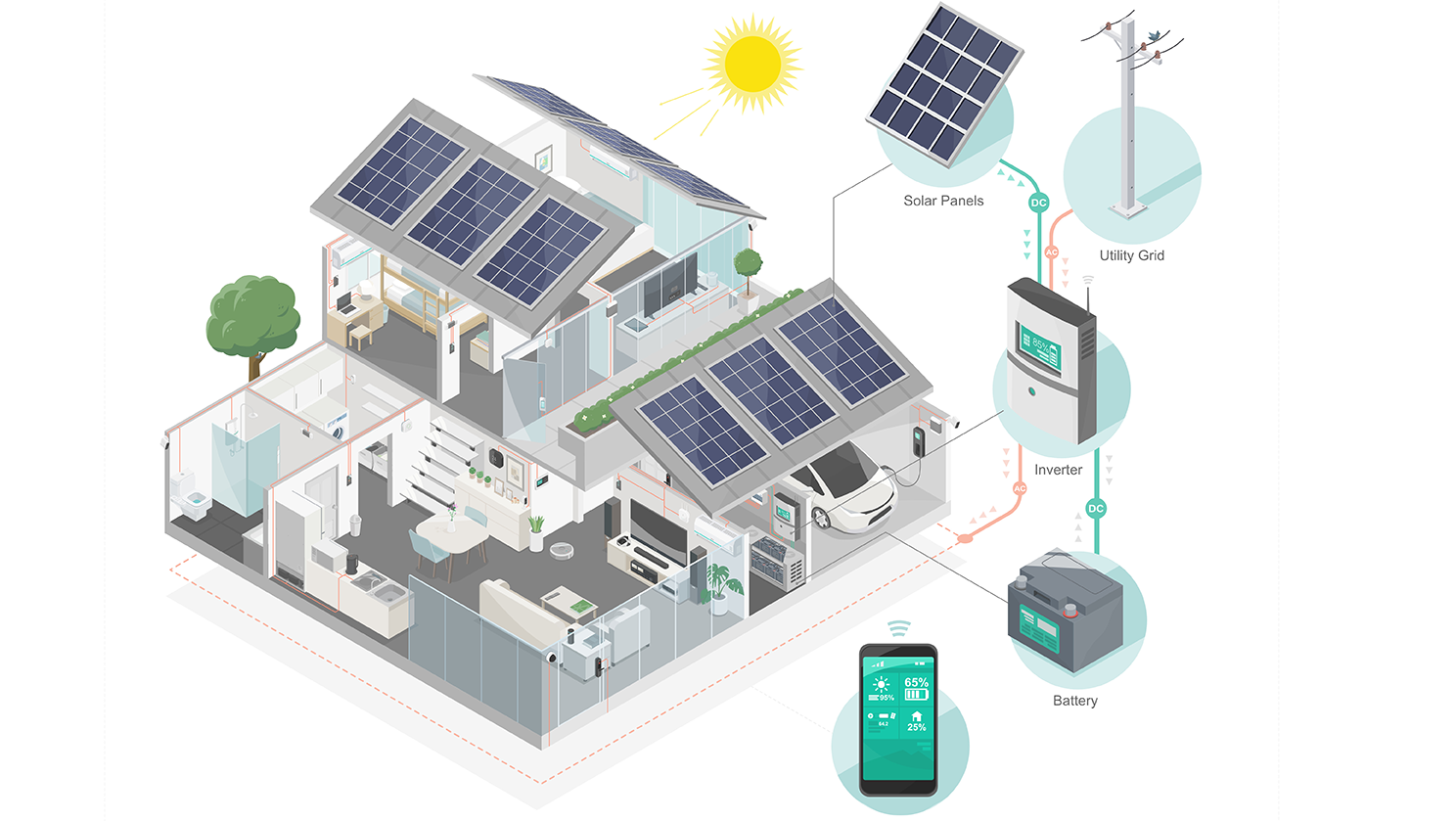Energy management systems and installation of renewable resources on the demand side
BACKGROUND
The daily increase in the demand for energy and its price causes users to consider new strategies for reducing consumption and consequently, lowering the electric bill. To achieve this goal, the development of energy management systems and self-consumption installations are two possible alternatives. The use of consumption optimisation algorithms is not known by a large part of the target audience, even though they are easy to implement. On the other hand, the existence of self-consumption installations enables to significantly lower the electric bill.
SOLUTE has extensive experience developing renewable energy installations as well as designing and developing electric grid diagrams for possible buildings or factories that wish to house these types of sustainable constructions. Additionally, SOLUTE has extensive experience developing consumption optimisation algorithms thanks to the use of tools such as RStudio and MATLAB, which are capable of creating effective and efficient electric power management solutions.
One of the biggest challenges for improving the efficiency of the consumption and lower the electric bill is a lack of knowledge about the existence of simple solutions that are easy to implement and which SOLUTE is capable of developing such as renewable energy installations or intelligent energy management systems.
SOLUTE has extensive experience designing renewable energy installations such as wind, solar or hydroelectric, large scale projects for large industries or power plants as well as smaller scale projects for family homes and residential or commercial buildings. Also, the use of these self-consumption installations, along with energy optimisation algorithms, form part of a series of strategies aimed at reducing the demand for energy.
To carry out these projects, a series of tools are applied such as EPLAN and AutoCAD Electrical, which are used to design and develop the electrical diagrams and the electrical connections that may be required for the self-consumption installations. Tools like RStudio and MATLAB are also used for developing the energy optimisation algorithms.
RESULTS
A system is proposed that will reduce consumption from the grid, by installing a self-consumption installation or by integrating intelligent energy management systems in a manner that will lower the electric bill.
The obtained result is a lower electric bill as a result of the self-consumption installation, given that the users themselves consume energy they create themselves.
METHODOLOGY
To carry out his project, depending on the size of the installation, regardless if it is a self-consumption or intelligent energy management type installation, a list and quantities of all the necessary components is provided, ensuring they meet applicable regulations such as IEC 62548, for photovoltaic installations, or 61131 for the PLCs the installation may include.
With the help of EPLAN and AutoCAD Electrical, the electrical diagrams and schematics are designed, which will include the location of the different components of the installation and must be ratified by the customer, who is provided with the entire project comprised of the different installations drawings, the number of components that comprise it and a detailed time line with the steps to carry out the implementation phase, commissioning, calibration, if applicable, and the fault diagnostics.
The obtained result is a lower electric bill as a result of the self-consumption installation, given that the users themselves consume energy they create themselves. Also, in the event intelligent energy management systems are used, the improved energy consumption will also contribute to lowering the electric bill.
VR
Digital Twins
Virtual replicas of a specific model that reflect their asset with a high degree of accuracy and incorporate data in real time, collected through sensors, to evaluate the performance and implement improvements that can be transferred to the original physical asset they represent.
Software
Ad hoc tools for clients
Data processing system with proven analytical capability to effectively satisfy client's needs
